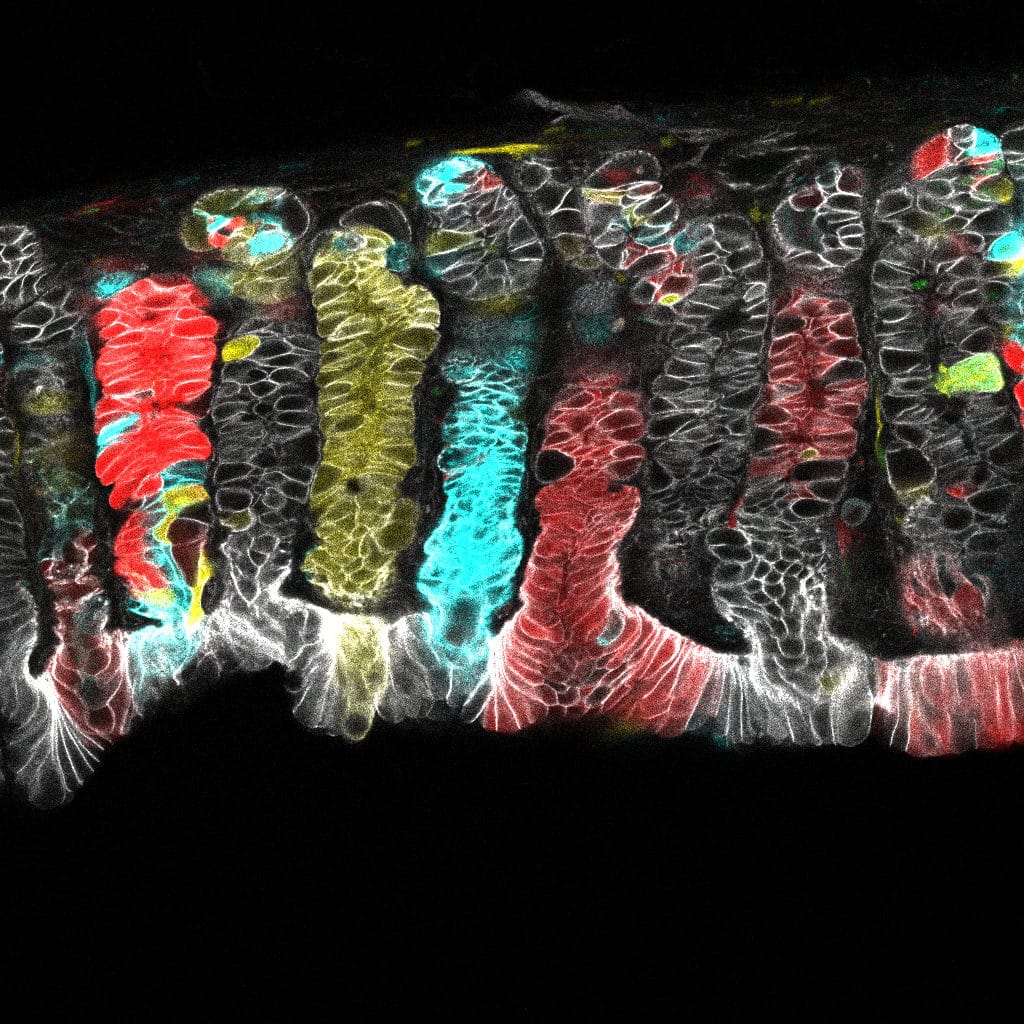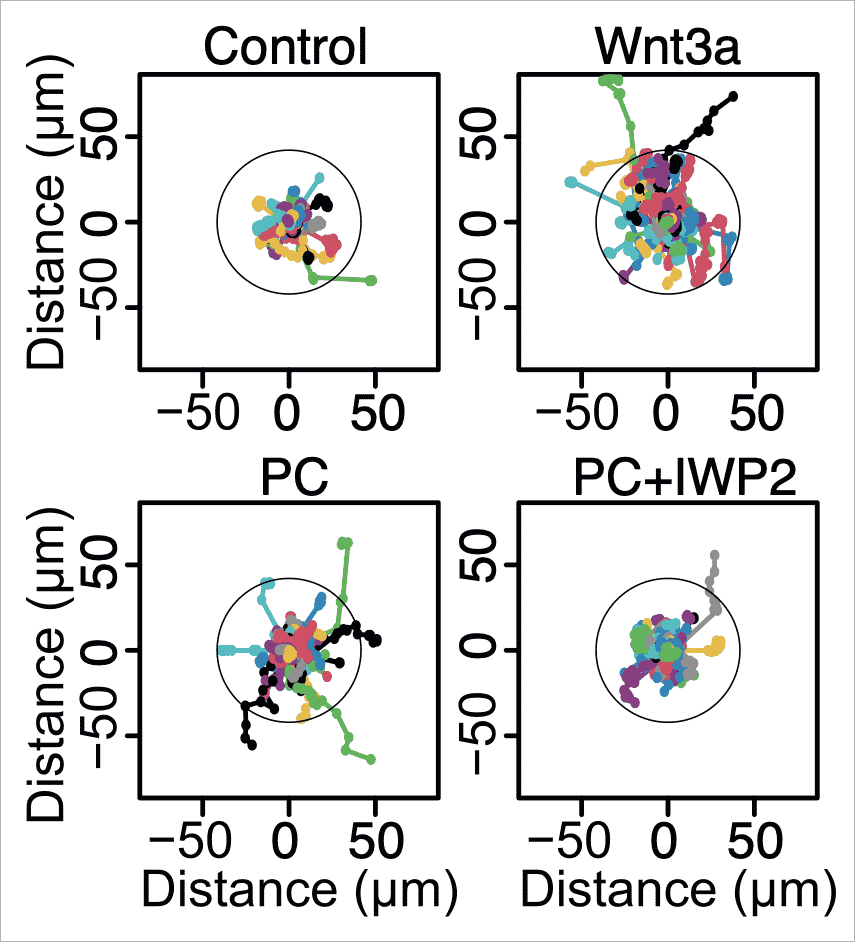Tracing the origin and segregation of the human germline
May 22, 2023
Read more
Researchers from the Netherlands Cancer Institute in Amsterdam and the Simons lab have discovered that stem cells can move counter to the natural flow of cells from the crypt to maintain the lining of the intestine. The researchers combined intravital microscopy of crypts in a live mouse over several weeks, with mathematical modelling.
Interestingly this dynamic regulation was seen in the small intestine but almost never observed in the large intestine, raising the question of whether these stem cell behaviours underlie the different tumour susceptibility of these two parts of the intestinal tract.
Azkanaz M et al. (2022) Retrograde movements determine effective stem cell numbers in the intestine. Nature. DOI: 10.1038/s41586-022-04962-0.

Fig 3a from the paper: migration tracks of single cells from confetti-labelled organoids
Morphology and functionality of the epithelial lining differ along the intestinal tract, yet tissue renewal at all sites is driven by stem cells at the base of crypts. Whether stem cell numbers and behaviour vary at different sites is unknown. Here, we show by intravital microscopy that despite similarities in the number and distribution of proliferative cells with an Lgr5 signature, small intestinal (SI) crypts contain twice as many effective stem cells as large intestinal (LI) crypts.
We find that, although passively displaced by a conveyor belt-like upward movement, SI cells positioned away from the crypt base can function as long-term effective stem cells due to Wnt-dependent retrograde cellular movement. By contrast, the near absence of retrograde movement in the LI restricts cell repositioning, leading to a reduced effective stem cell number. Moreover, upon suppression of the retrograde movement in the SI, the number of effective stem cells is reduced, and the rate of monoclonal conversion of crypts is accelerated.
Together, these results show that effective stem cell number is determined by active retrograde movement, revealing a new channel of stem cell regulation that can be experimentally and pharmacologically manipulated.